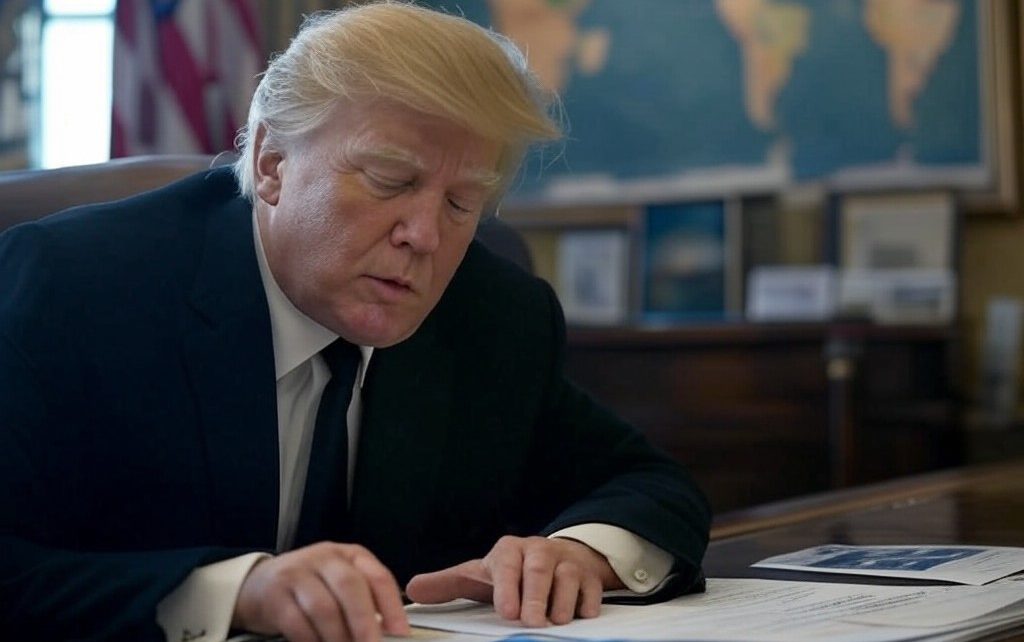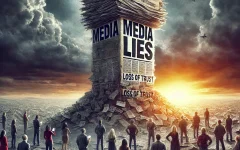
OPINION: Short-Term Pain, Long-Term Gain: Trump’s Tariff Strategy Unveiled
By Sam Fant, February 6, 2025 7:52 am
When President Trump imposed sweeping tariffs on Canada, Mexico, and China, critics howled about the economic pain that would follow. Headlines warned of trade wars, skyrocketing costs, and retaliatory measures. Economists predicted market instability. Political opponents called it reckless.
But what if the short-term pain was part of a larger, strategic play—one designed to position America for long-term economic dominance?
A Broken Trade System in Need of a Reckoning
For decades, the United States operated under the assumption that free trade was inherently fair trade. It wasn’t. China engaged in blatant intellectual property theft and currency manipulation while benefiting from low-cost labor. Mexico became a hub for outsourced American jobs. Canada imposed tariffs on American agricultural goods while enjoying near-unrestricted access to U.S. markets.
Previous administrations—both Republican and Democrat—shrugged off these imbalances as the cost of globalization. Trump saw them as existential threats to American industry and economic sovereignty. His response? A bold, confrontational trade policy that forced competitors and allies alike to the negotiating table.
The Immediate Impact: Short-Term Disruptions, Political Blowback
The tariffs were a hammer—blunt, disruptive, and controversial. American businesses that relied on Chinese imports faced higher costs, particularly in the manufacturing sector. Farmers, caught in the crossfire of retaliatory tariffs, voiced concerns over lost export markets. Wall Street, always skittish about uncertainty, wavered.
Critics pointed to these disruptions as proof of failure. Some in Congress called for an immediate rollback, arguing that tariffs functioned as a hidden tax on American consumers. Even within Trump’s own administration, economic advisors debated their effectiveness.
But Trump understood something fundamental: leverage. Short-term discomfort wasn’t the goal—resetting America’s trade relationships was.
The Long-Term Gains: A More Competitive America
Despite the initial pain, Trump’s tariffs forced China to the bargaining table, resulting in the Phase Onetrade agreement, which required Beijing to purchase billions in American agricultural goods and curb its intellectual property abuses. The deal wasn’t perfect, but it was a critical first step in holding China accountable—a feat that eluded past administrations.
With Mexico and Canada, the tariffs were a negotiating tool that led to the replacement of NAFTA with the United States-Mexico-Canada Agreement (USMCA). The new deal strengthened labor protections, increased American auto manufacturing requirements, and reduced barriers for U.S. dairy farmers exporting to Canada. The result? A stronger, fairer North American trade framework that prioritized American workers.
And the numbers support this strategy: In the years following these trade renegotiations, U.S. manufacturing investment rose, and key industries—including steel, aluminum, and semiconductors—began shifting production back home.
Addressing the Critics: The Counterarguments
Opponents of Trump’s tariffs have valid concerns. Some sectors—especially agriculture—felt the brunt of China’s retaliation. Tariffs on steel and aluminum raised costs for American manufacturers in the short term. Consumers did experience some price increases on imported goods.
But the reality is more nuanced. The federal government offset the impact on farmers with aid packages, ensuring they remained stable throughout the trade conflict. Many industries adapted by diversifying supply chains and moving production away from China to countries like Vietnam and India—or, in some cases, back to the U.S. itself. And despite the early fears, the U.S. economy remained resilient, with GDP growth and unemployment rates continuing to outperform expectations.
The Bigger Picture: Economic Sovereignty Over Cheap Imports
Trump’s tariffs weren’t just about economics—they were about national security. The COVID-19 pandemic exposed how dependent the U.S. had become on foreign supply chains, particularly for essential goods like pharmaceuticals and medical equipment. Had the administration not started to shift the conversation toward economic self-reliance earlier, America might have faced an even more devastating supply crisis.
This is the key question: Should the U.S. continue prioritizing cheap foreign imports over economic sovereignty? Trump bet on the latter—and despite the political firestorm, history may prove him right.
The Verdict: A Strategy That Redefined Trade
While critics framed Trump’s tariffs as reckless, they were anything but. They were a calculated, high-stakes move to reassert America’s dominance in global trade. Short-term pain? Absolutely. But in exchange, the U.S. secured stronger trade deals, increased domestic investment, and rebalanced relationships that had long favored foreign competitors.
America didn’t become a global superpower by playing it safe. Economic realignment requires disruption, discomfort, and decisive action. And whether one agrees with Trump or not, one thing is undeniable: He changed the game.
The question remains—will future administrations have the courage to continue playing to win?
Speak Up, Nevada! What’s on Your Mind? Send us your opinion!
Got the inside scoop on something happening in Nevada? Or the country? Do you have thoughts about life in Nevada that are too good to keep to yourself? Whether it’s a hot take on our politics, crime, education, or even the secret to surviving our summers, we’re all ears! Swing them our way at editor@thenevadaglobe.com. Come on, give us the scoop on what makes Nevada tick—or what ticks you off. Let’s make some noise and have some fun with it!
*************************
Legal Disclaimer
The opinions expressed in this article, authored by Sam Fant, are solely those of the author and do not reflect the views or positions of Nevada Globe. This content is provided for informational purposes only and has not been endorsed by Nevada Globe. We make no representations or warranties of any kind, express or implied, about the completeness, accuracy, reliability, suitability, or availability with respect to the content contained on this site for any purpose. Any reliance you place on such information is therefore strictly at your own risk.
Nevada Globe is not responsible for, and expressly disclaims all liability for, damages of any kind arising out of use, reference to, or reliance on any information contained within the article. No guarantee is given that the information provided in this article is correct, complete, or up-to-date.
Although this article may include links providing direct access to other Internet resources, including websites, Nevada Globe is not responsible for the accuracy or content of information contained in these sites.
Links from Nevada Globe to third-party sites do not constitute an endorsement by Nevada Globe of the parties or their products and services. The appearance on the website of advertisements and product or service information does not constitute an endorsement by Nevada Globe, and Nevada Globe has not investigated the claims made by any advertiser.




